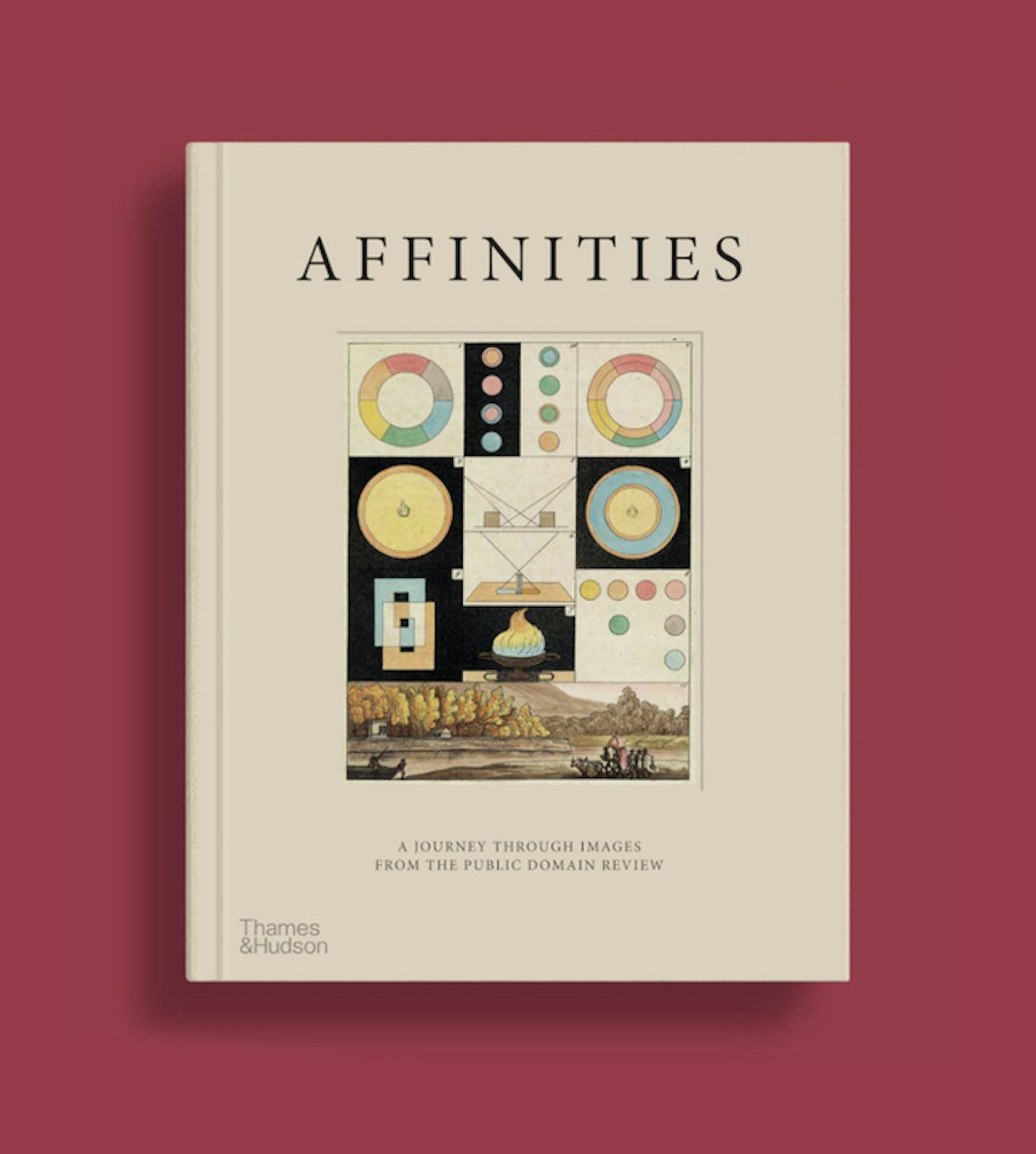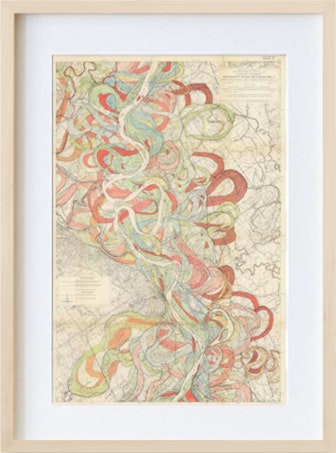
Looking Backward: Images of Rückenfiguren (ca. 1497–1925)
“The possession of a back — a side that can neither see nor be seen by the person to whom it belongs — literally pursues us all our lives”, writes the scholar Trisha Urmi Banerjee. “It probably exists, but I have not yet found, in the history of philosophy, a prolonged meditation on the back’s lack of ocular power.” Art history too tends to privilege the body’s anterior plane: what with those luminous eyes, the face’s limitless gradient of expression, a sensitive solar plexus offered up to the viewer. Yet there is a microtradition in the history of art known as the Rückenfigur (back figure), which comes to predominate in German Romanticism, that takes the back seriously as a surface of visual attention.
There are always precursors. Before Caspar David Friedrich recoded the back as a fraught invitation to sublime immersion, figures who turned away tended to conceal and protect a narrative space not fully open to our prying eyes. During the early modern period, we find works such as Albrecht Dürer’s 1497 engraving Four Naked Women and Jan Vermeer’s The Art of Painting (ca. 1667). In the former, the titular women, perhaps practicing a form of witchcraft, close their ranks and encircle a skull lying on the floor. While just a single figure is turned fully away, the others gaze inward — in fact, it is only the skull’s vacant sockets that meet our gaze, as if to say: “I can see what you cannot, and at what cost?”. These bodies’ enclosure creates what art historian Lionel Cust calls an atmosphere of “obscure import” and “mysterious significance”, the group of women cultivating “enigmatical meaning, which perhaps Dürer would alone be able to explain”. If Dürer’s Rückenfigur suggests a level of access open only to the artist, Vermeer’s The Art of Painting formalizes this distance as an ars poetica. A painter seen only from behind captures Clio, the muse of history, on his canvas, which is captured in turn by Vermeer. Yet the spatial distance sets a boundary. We can look on from afar and praise Netherlandish art — as the cartographic tapestry seems to invite — yet we will never gain first-order knowledge of the special relationship between artist and historical subject, creative force and inspiration.
 Scroll through the whole page to download all images before printing.
Scroll through the whole page to download all images before printing.In the nineteenth century, backs came to the fore thanks primarily to Caspar David Friedrich and those who took up the Romantic project, such as his student Carl Gustav Carus. Friedrich’s Wanderer above the Sea of Fog (1818) is often treated as a metonymy of the aesthetic sublime itself: that “agreeable kind of horror”, in the words of Joseph Addison, that fills the minds of those who contemplate the unbounded, seemingly infinite aspects of nature. In the “gloomy forest, and in the howling wilderness”, writes Edmund Burke, we find ourselves flooded with an instinct related to “the preservation of the individual”, as a cathartic, pleasurable, and vertiginous terror sweeps over our fragile bodies in the face of nature’s sublimity.
From Abbey in the Oak Forest (1809) through Chalk Cliffs on Rügen (1818) and Two Men Contemplating the Moon (1819–20) to Sunset (1830–35), Friedrich peopled landscapes of gothic ruins, heavy mists, and saturated skies with figures facing away. On one hand, these backlit subjects provide a perspective through which to focalize landscapes, as we imagine ourselves assuming the stance of their faceless bodies, beholding a nearly nuclear sunset or an alpine scene that recedes forever before our eyes. And yet there is also a kind of psychological distance here, akin to the refusal found in Dürer and Vermeer. The landscapes are predicated on spatial distance — “everything at a distance turns into poetry: distant mountains, distant human beings, distance events etc. all become Romantic”, wrote Novalis — yet our conditions of looking are also at a remove.
“In our encounter with the Rückenfigur and [Friedrich’s] vision”, claims the scholar Joseph Leo Koerner, “we feel ourselves late, and therefore estranged” from the fullness of nature. “Friedrich’s paintings are strangely sadder and lonelier when they are inhabited by a turned figure than when they are empty”, he concludes. Contemplating Friedrich’s The Monk by the Sea in 1810, the writer Heinrich von Kleist found himself overcome with such melancholy, at once identifying with the Rückenfigur and walled off from its promised experience, as the landscape itself becomes an allegory for beholding Romantic artworks, in line with Kant’s insistence that sublimity occurs in the mind of the beholder and not in the object that occasions its experience:
I have already found between me and the picture, namely, the demand that the picture made upon my heart, and the loss that the picture inflicted upon me. And thus I was myself the Capuchin, the painting was the dunes, but that across which I should have gazed with longing – the sea – was altogether missing.
In the wake of German Romanticism, the formal features of Rückenfiguren have been adopted toward various ends. In works like Gustave Caillebotte’s Young Man at His Window (1876) and Salvador Dalí’s Figure at the Window (1925), solitary subjects gaze onto sea- and cityscapes through the blinkered portals of our built environment. As art historian Sabine Rewald tracks in Rooms with a View: The Open Window in the 19th Century (2011), paintings like these owe a debt to Friedrich and dramatize the threshold between an individual’s internal and external world as windowpane thin. Moving the Rückenfigur even further away from nature, the Danish painter Vilhelm Hammershøi fashioned himself as a Friedrich of the domestic interior. In a series of images of his wife Ida Ilsted, painted at their Copenhagen apartment, Hammershøi depicts her from behind while she stares down corridors and gazes into seemingly empty space. Here our limited access to the sublime’s inconceivable vastness gets mapped onto the secrets of consciousness. We watch Ida looking and thinking but — without access to a face — cannot even begin to speculate as to her object of thought.
 Scroll through the whole page to download all images before printing.
Scroll through the whole page to download all images before printing.Two other medium-specific adaptations bear mentioning. There’s a rich and understudied tradition of using the Rückenfigur in ex libris illustrations on bookplates. As in Keats’ “On First Looking into Chapman’s Homer”, the vicarious thrills of reading are consecrated in a figure that we stand behind on the precipice of entry into a novel world. Shortening the duration of an artist’s model’s pose, photography also offered new opportunities for the Rückenfigur. In the Dutch photographer George Hendrik Breitner’s nude photographs of Marie Jordan’s back, we experience the frisson of voyeuristic looking. Like older depictions of the goddess Venus via Rückenfigur in works by Velázquez and Paul-Jacques-Aimé Baudry, obscurement is coupled with erotic fantasy, but here there is an additional, illicit sense of seeing a snapshot taken without its subject’s knowledge.
Below you will find a gallery of Rückenfiguren created in various media (paintings, engravings, photographs, bookplates, and more) that span half a millennium, featuring a wealth of artists, from Dürer to Dalí.
Albrecht Dürer, Four Naked Women, 1497. – Source
Jost Amman, woodcut of seated “Oriental” with sceptre, 1599. – Source
Diego Velázquez, Rokeby Venus, ca. 1648–51. – Source
Jan Vermeer, The Art of Painting, ca. 1666–68 – Source
Unknown artist’s croquis drawing of a Rückenfigur, ca. 1760. – Source
Jean-Auguste-Dominique Ingres, The Valpinçon Bather, 1808. – Source
Caspar David Friedrich, Wanderer above the Sea of Fog, ca. 1817. – Source
Caspar David Friedrich, Woman in Front of the Setting Sun, 1817. – Source
Caspar David Friedrich, On the Sailboat, 1818. – Source
Caspar David Friedrich, Chalk Cliffs on Rügen, 1818. – Source
Carl Gustav Carus, Wanderer on the Mountaintop, 1818. – Source
Caspar David Friedrich, Two Men Contemplating the Moon, 1819. – Source
Caspar David Friedrich, Moonrise by the Sea, 1822. – Source
Caspar David Friedrich, Woman at the Window, 1822 – Source
Carl Gustav Carus, View of Dresden at Sunset, ca. 1822. – Source
Carl Gustav Carus, Barge Trip on the Elbe near Dresden (Morning on the Elbe), 1827. – Source
Friedrich Mosbrugger, sketch of male Rückenfigur, 1827–29. – Source
Thomas Fearnley, Landscape with a Wanderer, 1830. – Source
Caspar David Friedrich, The Life Stages, ca. 1835. – Source
Caspar David Friedrich, Sunset (Brothers) or Evening Landscape with Two Men, 1837. – Source
George Caleb Bingham, Lighter Relieving the Steamboat Aground, 1847. – Source
Photograph by Jean Louis Marie Eugène Durieu made for a series of nudes with Eugène Delacroix, ca. 1850. – Source
Photograph by Onésipe Aguado de las Marismas of a female Rückenfigur, ca. 1862. – Source
Berthe Morisot, Woman at Her Toilette, ca. 1875–80. – Source
Gustave Caillebotte, Young Man at His Window, 1876. – Source
Félicien Rops, The Last Maja, 1880. – Source
Edgar Degas, Mary Cassatt at the Louvre: The Etruscan Gallery, 1879–80. – Source
Paul Cézanne, Standing Bather Seen from Behind, ca. 1879–82. – Source
Gustave Caillebotte, Man on the Balcony, Overlooking Boulevard Haussmann, 1880. – Source
Arnold Böcklin, Isle of the Dead, ca. 1880. – Source
Vilhelm Hammershøi, study showing the back of a boy, ca. 1884. – Source
Vincent van Gogh, Peasant Woman Digging, 1885. – Source
Collotype after Eadweard Muybridge depicting a woman walking with a back brace, 1887. – Source
William Merritt Chase, Study of Flesh Color and Gold, 1888. – Source
Albert Besnard, Back of a Woman, 1889. – Source
Dagobert Peche, Rückenfigur holding a bowl of fruit, ca. 1900. – Source
George Hendrik Breitner, Marie Jordan Nude, Seen from the Back, 1889. – Source
William Merritt Chase, Nude, ca. 1901. – Source
Cabinet photograph from Uppsala, Sweden, 1902. – Source
Vilhelm Hammershøi, interior with the back view of a woman, 1904. – Source
Edvard Munch, Two Human Beings (The Lonely Ones), 1905. – Source
Vilhelm Hammershøi, interior with the artist’s wife, Ida, in their home at Strandgade 30, Copenhagen, ca. 1905. – Source
Wilhelm Hammershøi, Rest, 1905. – Source
Ex libris of Alexander Erdmann-Jesnitzer, ca. 1909. – Source
Photographic study by Heinrich Mille, ca. 1900. – Source
Ex libris of Dr. Jur. Julius Freudenberg, ca. 1910. – Source
Ex libris of Hugo Sanner, ca. 1910 – Source
Umberto Boccioni, The Street Enters the House, 1911. – Source
Edvard Munch, Towards the Forest II, 1915. – Source
Man Ray, Ingres’ Violin, 1924. – Source
Salvador Dalí, Figure at the Window, ca. 1925. – Source
Imagery from this post is featured in
Affinities
our special book of images created to celebrate 10 years of The Public Domain Review.
500+ images – 368 pages
Large format – Hardcover with inset image
Jun 11, 2024






